'I'd never heard anything so loud in my life'
Warning: the following story discusses post-traumatic stress disorder.
If you or someone you know needs help, support is available at Lifeline on 13 11 14 or Beyond Blue on 1300 22 4636. If you are an Australian veteran or family of a veteran, you can also call Open Arms, Veterans & Veterans Families Counselling Service, on 1800 011 046.
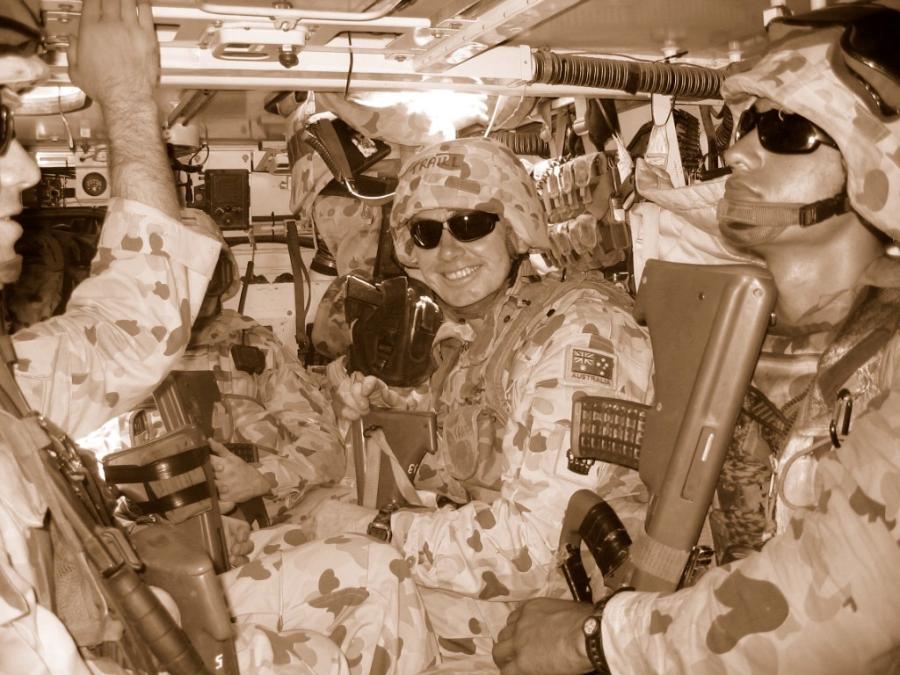
In the back of an Aslav: Gordon Traill in Iraq. Photo: Courtesy Gordon Traill
Gordon Traill can still hear the explosion.
He was in Iraq when a car bomb exploded outside the building he was working in.
“I'd never heard anything so loud in my life,” Traill said.
“It was right outside the front door and there was crap flying everywhere.
"It was very difficult to see and we had specific areas we had to get to in a contact.
"I was running as fast as I could up the stairs and fell hard, hitting my head on the concrete – luckily I had my helmet on.
“For a split second you're like a deer in the headlights, but then the training kicks in.
“I’ve got eight bolts in my neck now and I’ve had bilateral surgery on my knees.
“But that’s your job.
“We were 10-feet tall and bullet-proof, and I thought there was nothing wrong with me.”
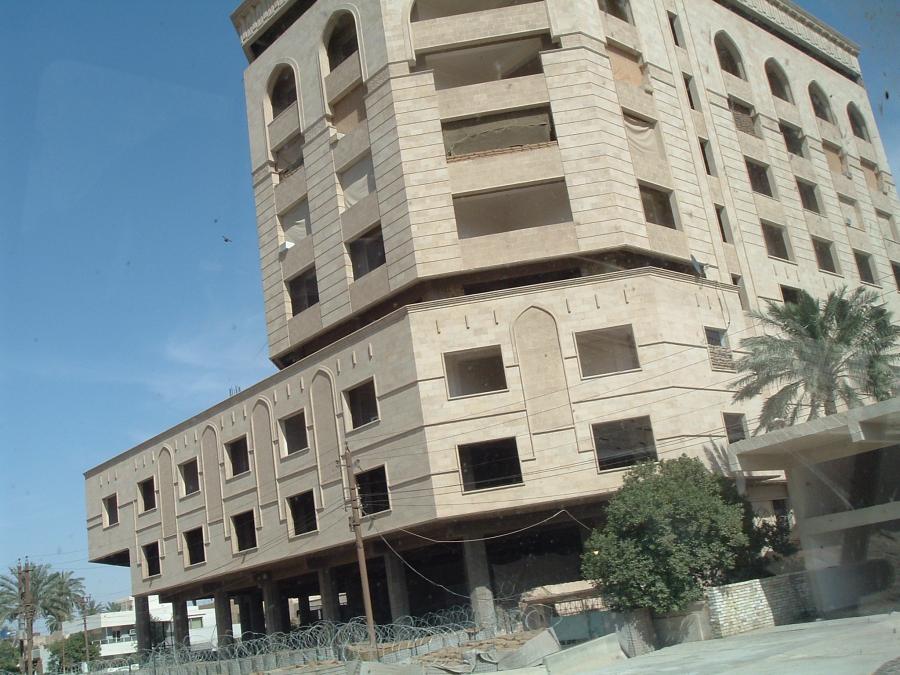
The Flats: Gordon was based in a 'bare concrete building' in the 'Red Zone' of Baghdad known as 'The Flats'. Photo: Courtesy Gordon Traill
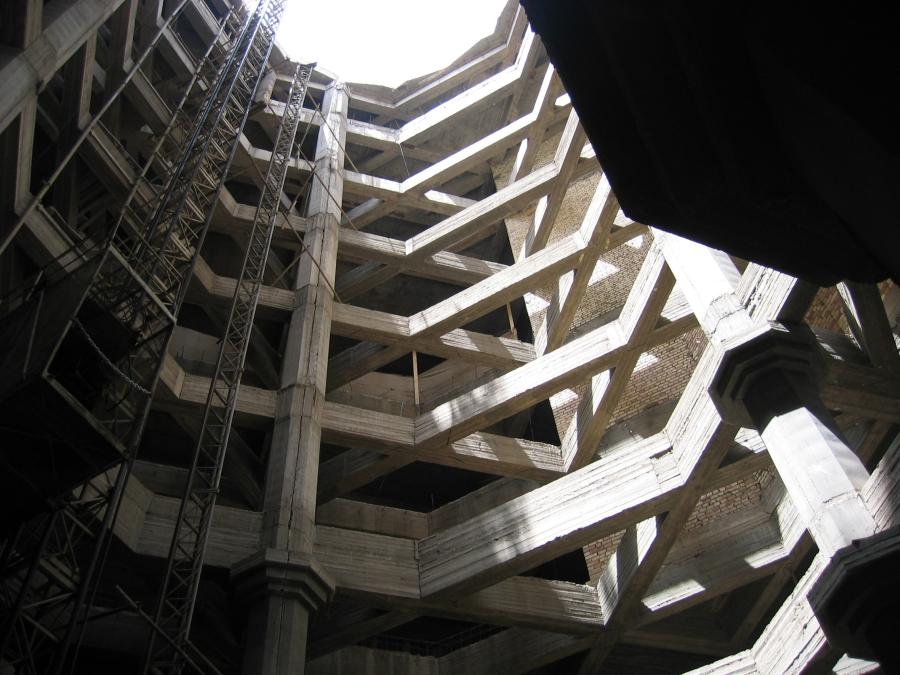
Inside ‘The Flats’ looking skywards. Photo: Courtesy Gordon Traill
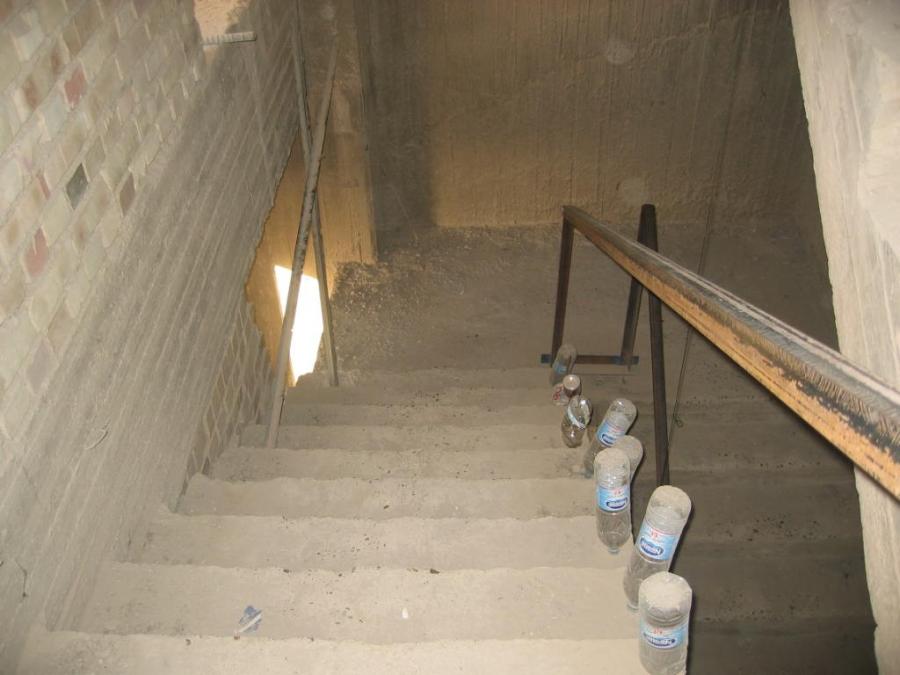
Stairwell at The Flats. Photo: Courtesy Gordon Traill
Traill was fulfilling a childhood dream when he first joined the Regular Army in October 1975.
“From a very young age, I knew I was going to be a soldier,” he said.
“I was born in Melbourne in 1956, and grew up in Broadmeadows, quite close to the Broadmeadows army camp.
“My family had emigrated from Scotland, and my eldest brother, Kenneth, spent 30-odd years in the navy.
“I always looked up to my big brother – he was in Malaya, Borneo and Vietnam – and I knew from an early age that my dad had been a serviceman during the Second World War.
“He was in the Royal Air Force and he spent three years in India and Burma during the war.
“I’ve got a photo at home, and it’s of me on my fourth birthday; I’ve got a Bren cart and a gun carriage with a howitzer.
“And from then on, I knew that I was going to be a soldier.
“I joined when I was 19, and I ended up doing 28 years.
“I got out just before Timor started, and had a couple of years break.
“But then September 11 happened, and that was it for me.
“I looked at my wife Shona and said, ‘I’m going back in,’ so six weeks later I was back in uniform as a warrant officer.”
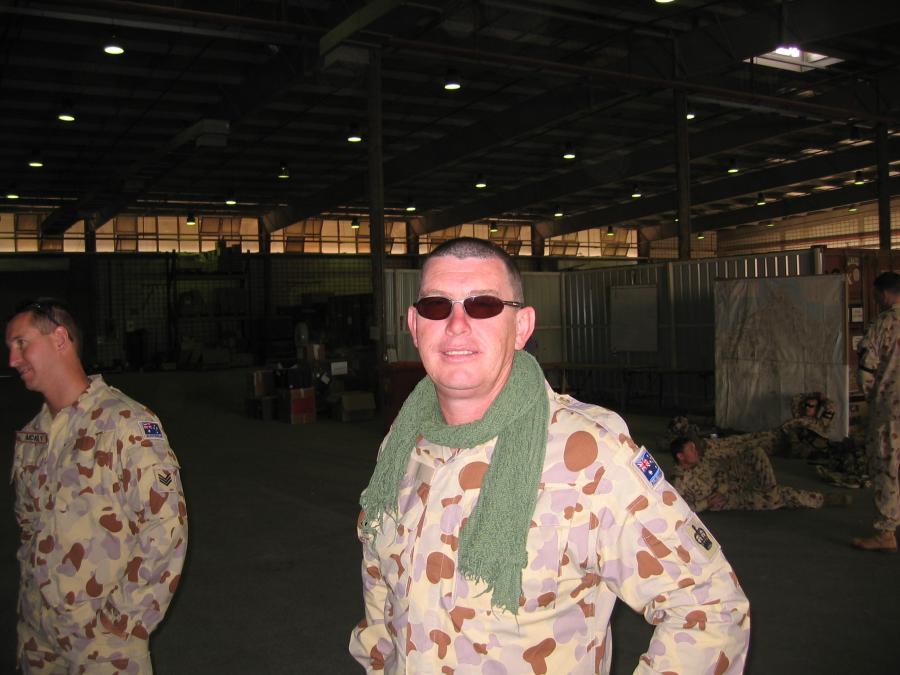
Transition in Kuwait: Gordon pictured during the briefing in Kuwait before heading into Iraq. Photo: Courtesy Gordon Traill
Traill was serving with 5/7RAR in Darwin when he was deployed to Iraq in 2004 as part of SECDEC 4.
“I was 48 years old when we flew into Baghdad,” he said.
“And it was like going to war with my sons.
“We hit the runway and came to a screeching halt, and then the doors opened.
“The first thing to hit you was the hot air. It was just like walking into an oven. The 40-degree heat just enveloped you.
“And that’s where I first picked up a camera.
“I just wanted to capture something of what it was like, so I could show the kids and my wife what it was like over there.
“I bought my very first camera – a one-megapixel point-and-shoot camera – in Kuwait on the way into Iraq. So I started taking pictures of our environment – what we did, where we lived, and all that sort of stuff – but I also kept a diary every day.
“Sometimes I would just write a couple of lines; other days I would write pages and pages.”
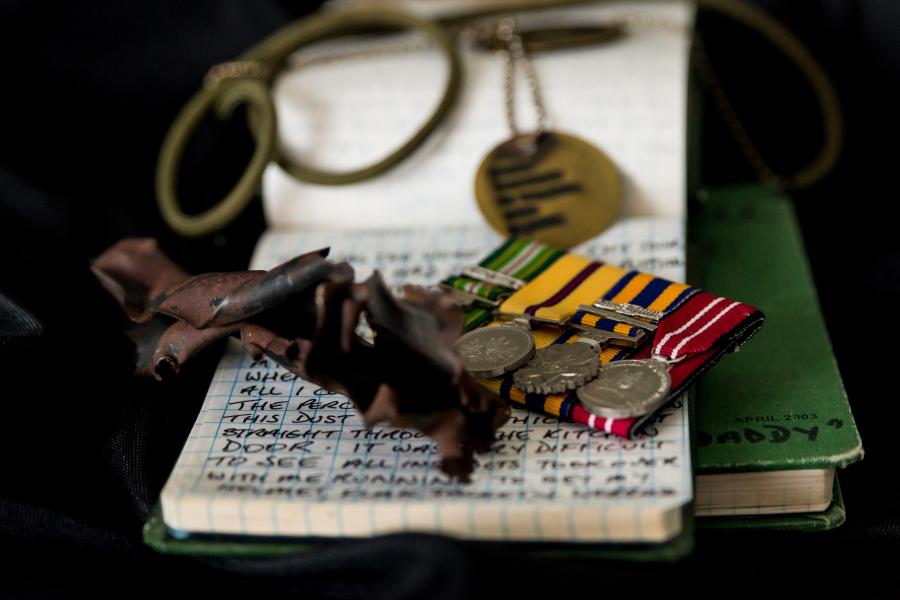
What is left from War: Gordon's diaries and medals along with a piece of shrapnel. Photos: Courtesy Gordon Traill
Traill was based in a “bare concrete building” in the “Red Zone” as part of the security detachment, responsible for protecting Australian diplomats and officials.
The Red Zone was the area outside the heavily guarded diplomatic/government area of closed-off streets in central Baghdad known as the International Zone or “Green Zone”.
"It was pretty hairy,” Traill said.
“At the time, it was probably the most dangerous city in the world, and you had to have your senses tuned in all the time.
“We were in what was a seven or eight story shell of a building … known as ‘The Flats’.
“We could see the Tigris River, and one of Saddam Hussein’s son’s palaces was located about 400 metres away.
“Our role was to ensure the protection of the Australian Ambassador and his staff so that they could get around and conduct business in Baghdad.
“It was not uncommon in a single day that there would be 55 or 60 bombings.
“Every day there were mortars, improvised explosive devices and rocket-propelled grenade attacks all around the city.
“You didn’t even bother reporting small arms fire, because that was just all the time.
“It was a very, very dangerous place.
“But at the time, it was just part of everyday life over there, and you did the job you were trained for.
“These 22–23-year-old section commanders, these corporals, they’d be out on a foot patrol with 10 other guys and they were making boardroom decisions on the spot, which was either a life or death situation, so I had great admiration for these young diggers.
“If the building wasn’t rocking you were okay.
“I thought yeah, everything is fine, no dramas, and that I would continue on taking photos, but I really didn’t pick up a camera again until six or seven years later.

Home from Iraq: Gordon's boots and hat. Photo: Courtesy Gordon Traill
“When I came back from Iraq, my wife Shona noticed that things weren't quite right…
“I wasn't sleeping. I was very hyper-vigilant, and looking around.
“We'd be driving down a road and I'd be looking to the left and right…
“She was the one who said that I needed to go and get some help.”
In 2006, Traill was diagnosed with post-traumatic stress disorder and major depression.
“I was a lost soul,” he said.
“I’d lost my identity as a soldier, I’d lost my job as a full-time provider, I’d lost everything.
“And I was in a pretty bad way.
“My mind was like Swiss cheese. I can’t tell you what I was thinking or feeling during much of that time.
“It’s like walking around in a big daze for days on end and not wanting to go and meet your friends and family, and just wanting to hide away.
“I got to the stage where I just couldn't get out of bed.”

It was then, that Traill rediscovered his passion for photography.
“I flippantly used to say to people that my wife told me to get out of the house and get a hobby, so I took up photography, but in actual fact she wanted me to be passionate about something like I was in the army because every day I went to work in the army, I loved it.”
Traill went to a camera club on the Bellarine Peninsula in Victoria one night with his brother-in-law, and something clicked as he looked at the images on the walls.
“I thought I reckon I could do this, and that was the start of it,” he said.
“I just started slowly taking some images and then my daughter gave me a hand-me-down SLR camera that I’d actually bought for her.”
He went on a trip to New York with his eldest son and was encouraged by the response to his work.
“Your kids are pretty brutal, and they’ll tell you straight up if it’s good or if it’s bad,” he said.
“But when I came back, I got some really great, positive feedback …
“That just encouraged me to do more and then I decided to do a small exhibition of some of my works.”
He began winning awards and was asked to be the lead photographer on the fundraising book, The Victoria Cross: Australia Remembers. He was then asked to be a co-author and photographer on the Invictus Games book, Unconquered – Our Wounded Warriors.
Gordon Traill's Unconquered courage was judged highly commended as part of the Memorial's 2019 Napier Waller Art Prize.
His photograph, Unconquered courage, was highly commended in the 2019 Napier Waller Art Prize. It was taken at the Invictus Games in Sydney in 2018 and captures a competitor from the United Kingdom participating in the swimming heats.
“I was lucky to be in the right place at the right time,” he said.
“We took over 6,000 photos in a week, and I’d never shot sports photography in my whole life, so it was all on the fly.
“I came back to the hotel room after the first day of shooting the cycling and the sailing, and I was just gutted.
“I thought I hadn’t got anything, and then I had a strong talking to myself and said, ‘Nope you’ve got to get back on the horse and get going again.’
“The next six days were just a blur and I met some fantastic competitors …
“This [image] was taken on the Wednesday morning at about 8.30. It was the heats of the swimming and … what drew me to him was the artwork on his back. It was all tattooed, and then I saw his legs sitting at the side of the pool.
“It really said something from the heart for me and I thought, ‘Yeah, you’ve been through a fair bit mate.’
“I could see from the art on his back that he’d been in armoured corps. He had the soldier etched on his back … he was just sitting there, and he was just pondering, and I thought, ‘Wow, how courageous is that guy?’
“Now, when I see it, I know it evokes emotion in me, so hopefully it evokes some emotion in others.”
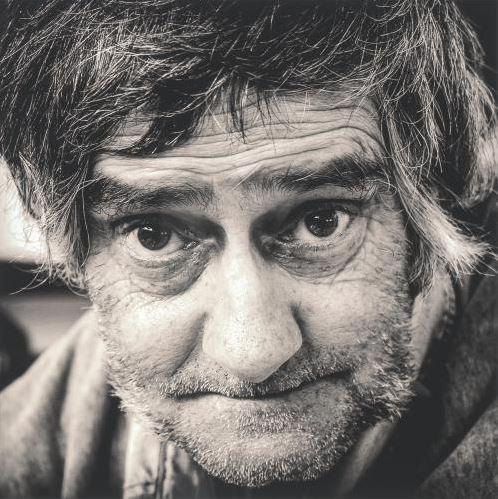
Gordon Traill's photograph Ricky was highly commended in the 2022 Napier Waller Art Prize.
His work Ricky is just as powerful. It has been on display at Parliament House in Canberra, one of the Highly Commended works in the Australian War Memorial’s 2022 Napier Waller Art Prize.
“I met Ricky at a community lunch in Geelong,” Traill said.
”We chatted about mental health issues... and I explained that I was in the military for 28 years and I wanted to give back.
“He explained that he didn’t have a photo of himself and would really like one …
“He hadn’t had a photo taken in about 20 years.
“And when I went back and gave it to him, he just broke down … so it was pretty heart-wrenching.
“I felt I had a real connection to Ricky as I asked him to stare straight down the barrel of the lens.
“This image is one of my all-time favourites.”
Today, Traill is passionate about the healing power of art. His is an arts mentor for the Australian National Veterans Arts Museum (ANVAM) and also took up painting during the Covid lockdowns in Victoria. He hopes that sharing his story will help others.
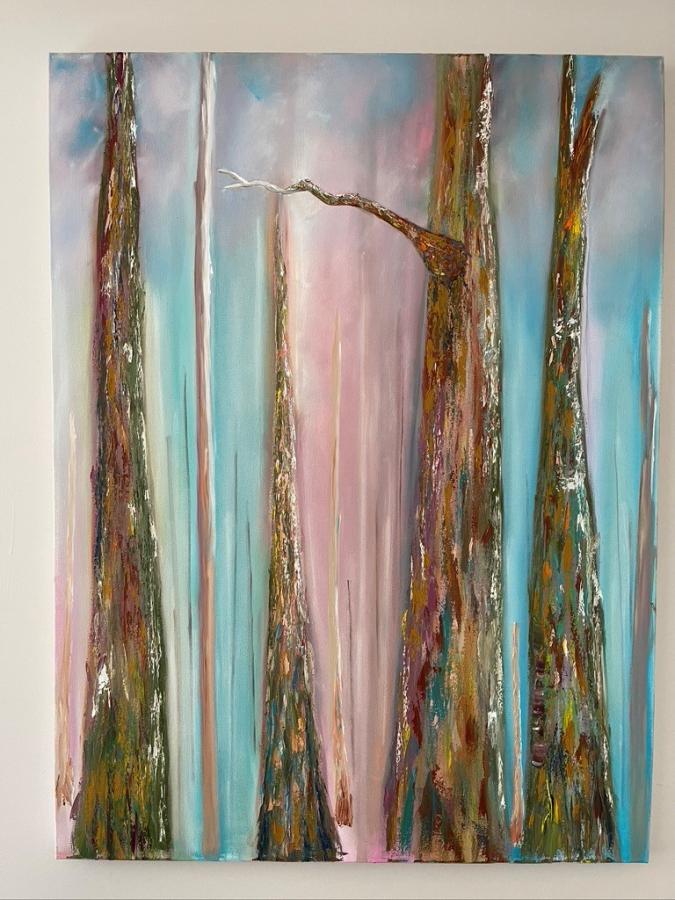
Gordon Traill is an arts mentor for the Australian National Veterans Arts Museum (ANVAM). He took up painting during the Covid lockdowns in Victoria. Photo: Courtesy Gordon Traill
“I’m just so grateful for the Napier Waller Art Prize,” he said.
“It allows veterans to get out of their comfort zones.
“Whether it’s art … painting, photography, drawing … it just brings everything together and gives you belief in what you do.
“Once I picked up that camera I could see things through a different perspective.
“I was able to lose myself for a couple of hours if I went out and did a photoshoot.
“My wife, photography and painting saved my life.
“And that’s why I’m very passionate about art and especially veteran art. It soothes the soul … it really does.
“Photography has been a huge healing tool for me, and I talk about post traumatic growth now.
“I didn’t think that I’d ever be a veteran artist or a photographer, never in a million years, but here I am.
“Once I was a soldier; now I’m a veteran artist.
“Who would have thought that at 66, I’d be a finalist in a prize like this.
“For me, it’s just living proof that it does work.
“You can’t be bitter and twisted about what’s occurred to you. You’ve got to be positive.”
“And so would I do it all over again?
“Absolutely. Even with all the bad times that came with it.”
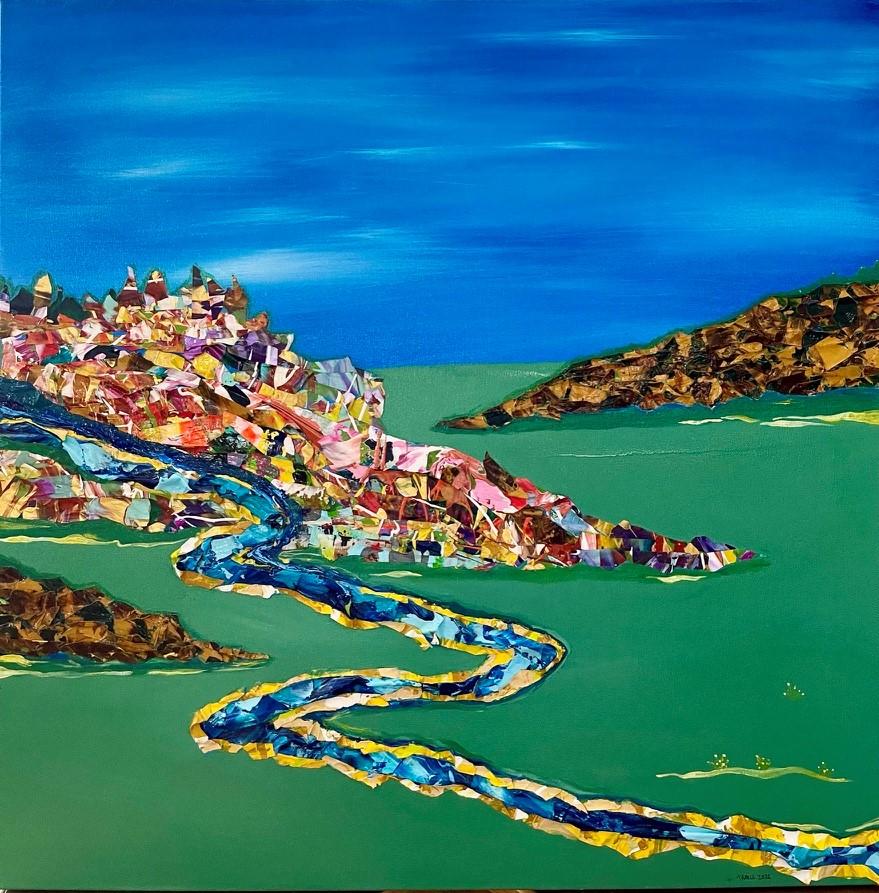
Gordon Traill: 'My wife, photography and painting saved my life.' Photo: Courtesy Gordon Traill
For more information about the Napier Waller Art Prize, visit here.
If you, or someone you know requires support, please contact:
Defence All-hours support line – The All-hours Support Line (ASL) is a confidential telephone service for ADF members and their families that is available 24 hours a day, seven days a week by calling 1800 628 036.
Open Arms – Veterans & Families Counselling Service provides free and confidential counselling and support for current and former ADF members and their families. They can be reached 24/7 on 1800 011 046 or visit the Open Arms website for more information.
DVA provides immediate help and treatment for any mental health condition, whether it relates to service or not. If you or someone you know is finding it hard to cope with life, call Open Arms on 1800 011 046 or DVA on 1800 555 254. Further information can be accessed on the DVA website.
